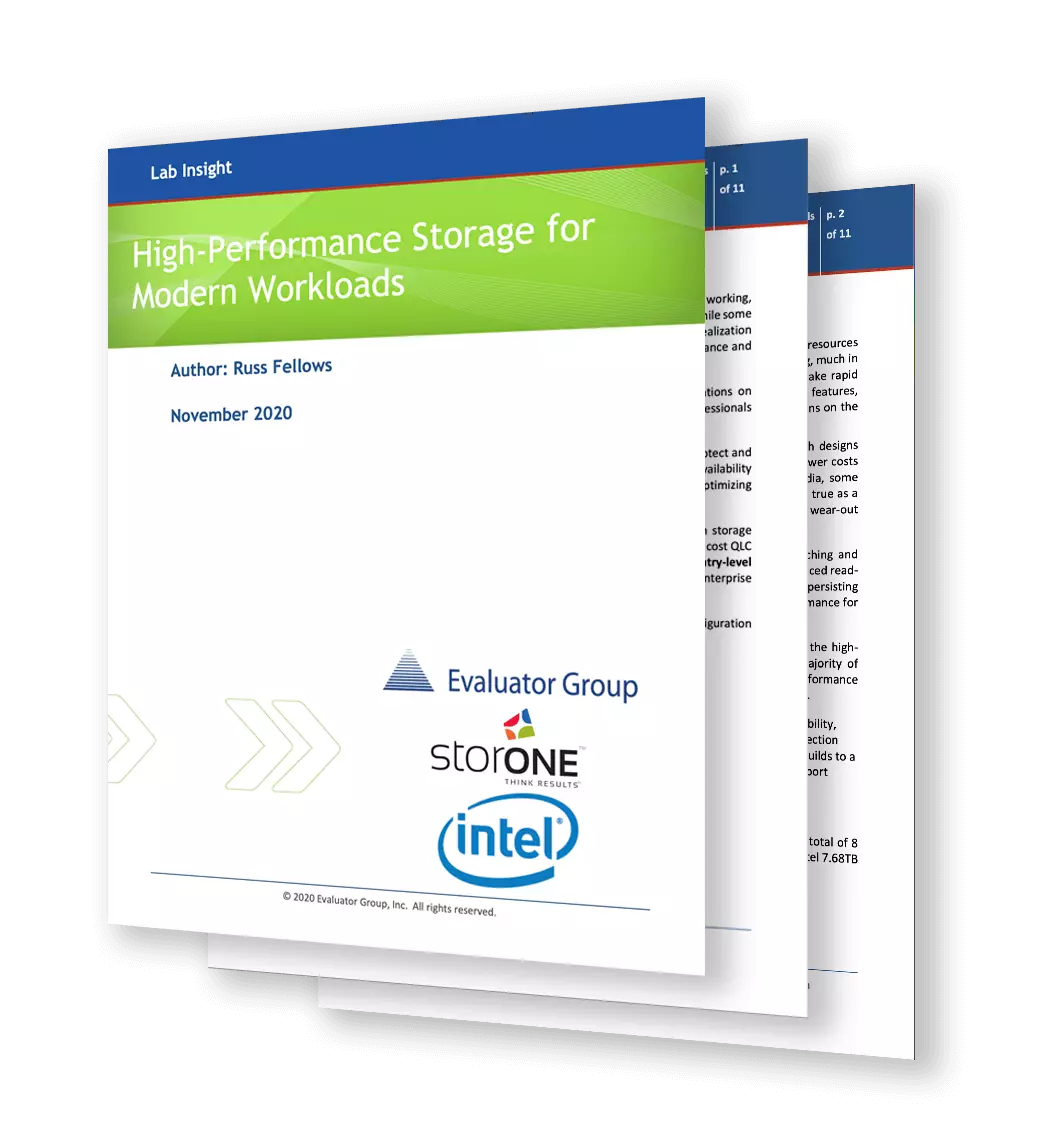Oracle, MySQL, and MS-SQL continue to host most organizations’ critical applications, but in 2021, database storage requirements are fundamentally different from ten years ago. Modern databases are multi-threaded, write-intensive environments that require incredibly low latency. The big challenge for IT professionals is not only meeting these requirements but doing so cost-effectively.
Data Integrity – Database Storage Requirement #1
Despite the need for performance and low latency, the number one requirement for a database is data integrity. Most vendors need to meet the write performance expectations of databases by putting data at risk using a write cache. A write cache acknowledges writes in memory instead of on persistent storage. Memory failure means data loss.
Databases developers design their products to resolve unacknowledged writes, but these products can’t quickly recover from a falsely acknowledged write. As a result, vendors go to great lengths to protect memory, which adds cost, complexity, and still is not 100% effective.
StorONE’s efficient storage software allows our storage systems to deliver incredibly high performance without using risky write caches. All of StorONE’s writes are always to persistent media. We provide hundreds of thousands of IOPS with only eight flash drives. Our Intel Optane powered All-Flash Array.next can deliver over one million IOPS with only FOUR Optane drives. The Evaluator Group independently verified these performance results in their report “High-Performance Storage for Modern Workloads.“
Besides not requiring a write cache, StorONE’s vRAID delivers unprecedented levels of protection from multiple media failures and rapid return to protected states. Our snapshots enable you to apply consistent snapshots of your database environment as frequently as every three minutes and retain those snapshots indefinitely—all without impacting performance. The result is less dependency on a separate backup application for recovery. Our snapshot technology allows you to restore snapshots as writeable, enabling you to use those snapshots to feed other related processes like test, development, QA, and reporting.
Low Latency – Database Storage Requirement #2

IOPS are essential when comparing storage systems, but the latency incurred as the storage system is under load is even more critical. The second database storage requirement is to deliver consistent, low latency. When you deal with storage media capable of providing microseconds of latency, the software often becomes the primary bottleneck. The age-old method of throwing more hardware at the problem can no longer make up for software inefficiencies. Vendors, to keep pace, have removed the features, like snapshots, enterprises require. Alternatively, they develop custom hardware configurations that lock-in their customers and dramatically increase database storage prices.
The only way to consistently lower latency is to drive out inefficiency. StorONE’s S1 Enterprise Storage Platform is storage software reimagined, written from scratch to be extremely efficient, fully leveraging the latest hardware innovations while still providing enterprise features. The Evaluator Group report shows the results of these efforts; very high performance with consistent low latencies.
High Write Performance – Database Storage Requirement #3
The third database storage requirement is the result of database architects using significantly more RAM in their servers than they did ten years ago. As a result, the modern database typically has 80% to 90% write load versus reads. A common requirement when working with customers is for StorONE to deliver sub-millisecond latencies at 8K block sizes while sustaining 75,000+ WRITE IOPS. Again, The Evaluator Group report shows us consistently meeting or exceeding these requirements.
Affordable $ per IOPS
The three modern database storage requirements must also meet reality so along with the 2021 database storage requirements we should also change the way performance is evaluated. One million IOPS won’t do you any good if it costs one million dollars. The organization has to be able to afford the storage system that can deliver on these requirements. The problem is meeting these requirements requires storage vendors, because of their inefficient storage software, to make their customers buy dozens of flash drives, high-end storage controllers, and lots of RAM to support their risky write cache habits. Since most databases are terabytes in size, forcing customer to by one hundred or more TBs of capacity is the ultimate in inefficiency.
Our All-Flash Array and AFAn use our efficient storage software to extract maximum performance from as few drives as possible. The Evaluator Group tested our most affordable AFAn configuration, not the system that could deliver the highest possible performance. Why? We wanted to show what efficient software can do with minimal hardware.
Transparent Pricing
A Database Storage Requirement You Didn’t Think You Could Get
When vendors hear about a customer with high-performance database requirements, they get dollar signs in their eyes. Getting an exact price from them, however, is sometimes more difficult than installing the system. If you visit StorONE’s TRUprice site, you can get the pricing transparency you deserve. The result is an AFAn system capable of delivering one million IOPS but cost less than $50,000. The fault-tolerant version of that system, perfect for database environments, is less than $78,000 and adds no additional latency. Using our storage platform, an organization can design an incredibly high performance, fault-tolerant system with a third system for off-site for DR for less than $125,000.
The Power to Do More
Often database storage systems can only be database storage systems. Either the vendor limits the software’s capabilities, or the database environment overwhelms the storage infrastructure. As a result, it can’t support non-database workloads. Among the 2021 database storage requirements should be consolidation.
With StorONE’s enterprise storage platform, we can handle both your database requirements and other environments like Vmware/Hyper-V and unstructured data within the same platform. The result is a better storage consolidation strategy. Start small. Let our platform prove itself to you in your most demanding environment, databases. Then add additional workloads when it makes sense. Most of our customers purchase additional licensing within six months of their original purchase.
Learn More
This Thursday, during our live webinar, Russ Fellows, Senior Partner at the Evaluator Group, and I will present their lab report findings and discuss how database storage is changing. We’ll review these modern requirements so you can design a storage architecture that will meet your current and future database needs. Register below:





